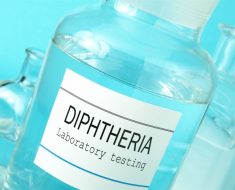A new study from Johns Hopkins shows that individuals with early onset Alzheimer’s disease—those under the age of 65—don’t benefit from deep brain stimulation, a treatment already proven to be effective for easing motor symptoms of people with Parkinson’s disease.
“Our results suggest that as we look at deep brain stimulation as a treatment for Alzheimer’s disease, we should probably focus on those over 65, which is the bulk of people with Alzheimer’s,” says Jeannie-Marie Leoutsakos, associate professor of psychiatry and behavioral sciences at the Johns Hopkins University School of Medicine. “Over the years, there’s been little in the pipeline that is promising for Alzheimer’s, so there are now plans in the works for a larger trial only including people over 65.”
Alzheimer’s disease is a progressive brain disorder that affects memory and thinking skills and eventually limits the ability to carry out simple tasks. According to the National Institute on Aging, experts suggest that more than 5.5 million Americans may have Alzheimer’s, which is currently considered the sixth leading cause of death in the U.S.
The researchers say halting or reversing declining cognition is a tall order and unlikely, but even slowing or delaying decline would have significant public health impacts in terms of care costs and patient and family quality of life.
The study included people with early onset and late-onset Alzheimer’s, because researchers didn’t think initially that one group would be more likely than the other to be responsive. A total of 42 people with mild Alzheimer’s had deep brain stimulation devices implanted in the brain in a spot between the hippocampus, which is responsible for learning and memory, and the hypothalamus, which regulates body temperature, hunger, and thirst. Twelve participants were under 65 with early onset Alzheimer’s and 20 participants were over 65. Half the devices were turned on at the beginning of the first year; the other half of the devices were turned on after a year. Each device delivered continuous stimulation at 130 hertz between 3 and 3.5 volts—a stimulation similar to that successfully used on people with Parkinson’s disease.
To track clinical dementia rating and progression of disease, the researchers used two questionnaires that looked at word memory, cognitive tasks, judgment, and personal care. They also used PET scans to track changes in the participants’ brain structure.
The researchers didn’t see any benefit such as slowing of cognitive decline for those participants under age 65. They still declined on the tests at the same rate as those people who hadn’t had their devices turned on and forgot words in the test as often. There is a possibility of benefit among participants over 65 in that they didn’t seem to be declining as fast as those without the device turned on, but researchers won’t know for sure unless they complete a larger study.
As to why there wasn’t a clear benefit in those with early onset Alzheimer’s, the researchers suggest that it’s possible that the participants may have been too far into the disease progression to make a difference. It’s possible that the early onset condition is a different disease progression, and the PET scans in their study did show that younger patients had more deficits in metabolism than the older patients.
Eight participants reported serious adverse events such as falls, fainting, seizures, infection, and mental agitation after having the brain implant. According to the researchers, the safety profile is similar to or better than those of medications that are being developed to treat Alzheimer’s disease.
Source: Read Full Article





